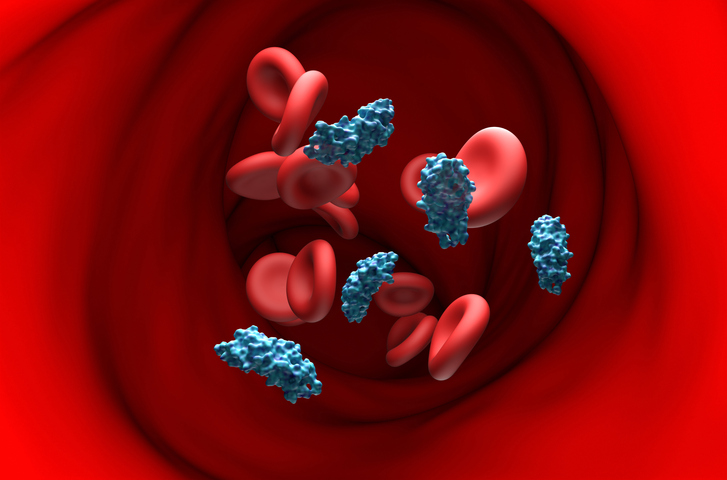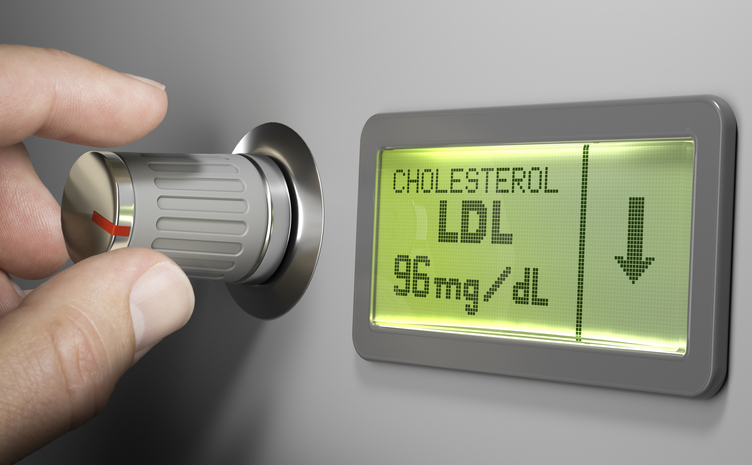Dr. Michael Blaha on Detecting Heart Disease, Treatment Adherence, and Optimal Statin Therapy
By Rob Dillard - Last Updated: May 2, 2023High cholesterol is a major risk factor for heart disease, which affects nearly 94 million Americans and is the leading cause of death in the U.S., according to the CDC. High cholesterol often shows no signs or symptoms before heart disease develops, so while patients can’t see it or feel it, high cholesterol can be dangerous if left untreated. Proper diagnosis and treatment planning is a must.
DocWire News spoke with Dr. Michael Blaha, Director of Clinical Research for the Prevention of Cardiovascular Disease at John Hopkins, who spoke to us about detecting heart disease, adhering to treatment, and switching statins when a patient’s current medication is no longer working.
DocWire News: Can you give us some background on yourself?
Dr. Michael Blaha: Yeah, I’m a cardiologist, a non-invasive preventive cardiologist, that practices in the space where we try to prevent heart attacks and strokes, thinking about risk factors like hypertension, cholesterol, smoking, and of course diet and exercise too.
How big an impact has the COVID-19 pandemic had on heart patients?
Yeah, there’s no doubt this is a unique time to practice medicine or be a heart patient for that matter because the pandemic has disrupted everything about what we do. I think we see different effects on different people depending on your stage of life or your employment, life has changed. But one thing that has definitely changed of course is your interaction with your healthcare provider or your physician. We know that a lot of people, maybe up to one third of people, have delayed or foregone healthcare during this time period. You might not have had as much access to your physicians to talk about problems you’re having with your medications or symptoms you’re having. And of course a lot of patients unfortunately during the pandemic exercised less, or ate less well and may have put them at higher risk of heart disease while at the same time being afraid of visiting a healthcare facility if they have symptoms because of the concern of course the virus.
Why is early detection of high cholesterol so important?
That’s a great question. I mean, this comes up of course all the time. We detect high cholesterol way too late in life because it’s really a cumulative effect. It’s really how high your cholesterol has been for how long, and that’s why of course people with familial hypercholesterolemia have the highest risk early in life because their cholesterol was very high even from birth. So you really want to detect high cholesterol early enough that you can treat it and make a difference over the long term, and we know we can do that with modern therapies, but the question is are we detecting all those people, and we know that we’re not. We know that we’re missing a lot of people with high cholesterol because they’ll come in with heart attacks and we’ll diagnose them with high cholesterol at that time and that’s the first time they knew. So that’s why we always say you need to know your numbers, you need to know your cholesterol numbers, particularly if there’s a family history, so you can do something it. And that can be diet and exercise or of course medical therapy too.
How can early detection of heat disease be enhanced?
Well there’s a lot of ways of detecting heart disease early, but I mean as far as risk factors go it’s just measuring them at an early age, right, just getting your cholesterol checked as you enter adulthood and periodically thereafter just to make sure your cholesterol isn’t extremely high.
As far as blood pressure of course just check your blood pressure at least occasionally during your middle age years, and that’s when a lot of people start developing high blood pressure. As far as things like diabetes, as long as you visit your primary care doctor and get labs here and there we’ll catch the diabetes, but a lot of people don’t see a primary care doctor, have never checked their blood pressure and don’t know their cholesterol for example. And maybe haven’t had appropriate teaching about diet and exercise, so we detect that risk so late in life. And particularly when there is a family history, that should be another one of those triggers that you should be looking at your risk factors earlier in life because your family has manifested disease early. So once again we’re diagnosing way too many things, too many risk factors, at the time of a heart attack or stroke. That’s too late.
Talk to us about treatment adherence among patients with heart disease – when should they switch to statins, and what are the optimal statin therapies for this population?
Yeah, you grab the statins, which I think is really important. The statins clearly are the foundation of our treatment for heart attack and stroke risk. The statins are drugs that lower your cholesterol, they very effectively lower cholesterol, including the bad forms of cholesterol of course, the LDL cholesterol, the triglycerides, the lipoproteins B, the protein component of that bad cholesterol. They lower that cholesterol risk, and in proportion to that lowering of cholesterol risk they lower your heart disease risk. And they are by far the class of medications that have been the most tested and the most proven to work to lower cardiovascular disease risk, and they’re relatively safe. So it’s important to diagnose risk factors early. Clearly, if your cholesterol is high we commonly we need to treat that cholesterol with a statin.
The statins are also indicated if you’re a high risk patient even if your cholesterol isn’t all that high because it helps lower risk even if the cholesterol is let’s say moderate. So thinking about risk early in life, and there’s guidelines for this sort of thing that of course directly point to statins if you’re sufficiently high risk, thinking about them earlier in life and letting those statins go to work on your cholesterol, on your atherosclerosis, is by far the best way in concert with of course diet and exercise, of lowering heart disease risk.
How important is open communication between doctor and patient with respect to statin treatment options?
Yeah, open treatment is so important because we know that when you treat patients with a medication that you take for the long term, for long term benefit, many patients will either fail to recognize the importance or develop a side effect, or just gradually over time stop taking the pill. They might have forgotten of course why it was there in the first place. This can happen with statins because statins largely don’t cause any side effects, or they cause few side effects so patients might just be taking them and say I’m not feeling any differently, but of course lowering cholesterol doesn’t make you feel any differently, it’s just in the background of your medical therapy and it’s doing its job lowering your cholesterol and treating your atherosclerosis risk. But a lot of patients will stop taking the drug over time.
In fact, some studies suggest that 50% or more of patients who are taking it for the purposes of high cholesterol will eventually stop taking their statins. And of course when you take a medicine for a long time too sometimes side effects pop up, or perceived side effects pop up. So we know maybe a third of patients or more will switch or desire switching or stop a statin because of perceived side effects. So it’s really important to talk to your physician about that so that you don’t discard the statin and lose that potential benefit of that foundation of care for heart disease. We you talk about other options because there’s actually many drugs in the statin class that work in slightly different ways or at least are handled in the bodies in different ways. They give you many options so that you don’t need to leave the statin class of medications if you’re high risk just because let’s say a side effect or some concern that you have about the drug, which can happen a lot if you don’t talk to your physician.
Any closing thoughts?
Yeah. What I’ll say is I think I mentioned the guidelines, how important in the guidelines it says if you’re a higher risk patient to consider treating your cholesterol with a statin, that there are a lot of statin options, and that within the statin class there’s drugs that are metabolized in different ways that might have different side effect profiles. So when you’re a patient or a physician and you hear that a patient is having a difficulty with the statin, what I encourage people to do is think about trying different options within the statin class. There’s like I said drugs that are metabolized in different ways that have potentially less side effect profiles like Livalo for example is metabolized in a different way, and has a side effect profile that appears favorable and particularly in patients are taking multiple medications, or elderly patients, or patients with diabetes for example. And these are ways of getting patients to stay on statins and not leaving statins and taking something that’s less effective for example, or taking nothing at all.
So the fact that we have options, it’s not statin yes or no, it’s multiple options, multiple dosing strategies, and we’re pretty good at getting patients to stick with the class of medications because they’re beneficial if you talk to us, and we work with the patient on this. So that’s my key message today.







 © 2025 Mashup Media, LLC, a Formedics Property. All Rights Reserved.
© 2025 Mashup Media, LLC, a Formedics Property. All Rights Reserved.